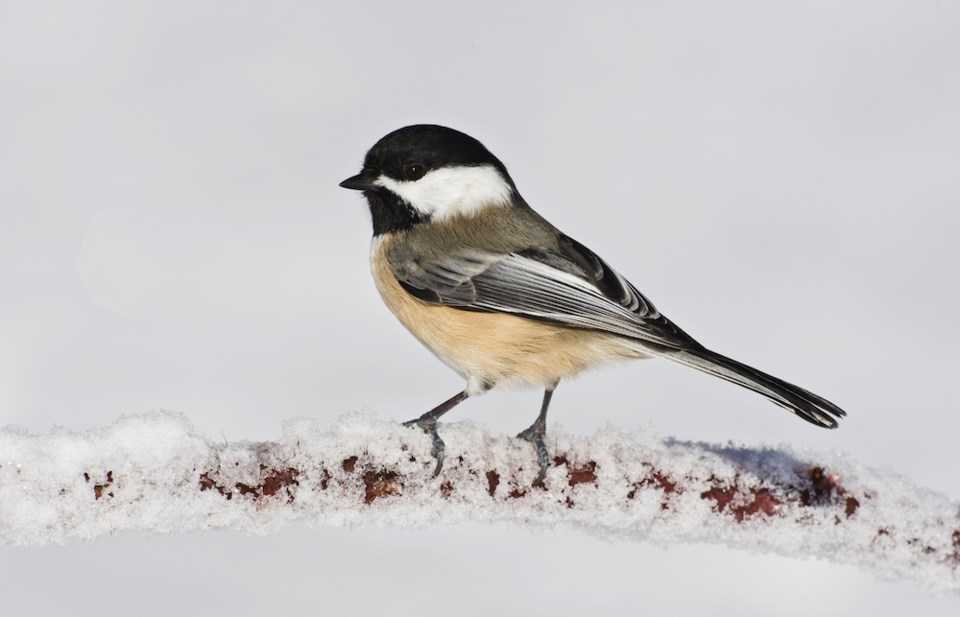Many Sunshine Coast residents have bird feeders, including hummingbird feeders, either seasonally or year-round. Beginning in the 1970s, Anna’s hummingbirds have become a very common resident and wintering species all around the Salish Sea. In the early 1980s the number of Anna’s on the Sunshine Coast could be counted on the fingers of one hand (all at Mrs. Robertson’s feeder in Lower Gibsons). I gave up recording Anna’s when the number exceeded 300, and I suspect there could be 1,000+ these days.
What other birds might you expect at a feeder this winter? Firstly, we feed birds mainly seeds, so the insectivores have no interest in seeds. However, suet or fat at feeders will attract some non-seed-eating species, including insectivores. Some species are omnivores and therefore attracted to various offerings. Exactly which species may appear at your feeder can be determined by your location and the surrounding vegetation. For example, the finches (house and purple) are generally more urban, while others may be commoner if forest or non-urban vegetation surrounds the feeder.
Among the seed eaters, the sparrows and finches are the leading suspects, with most feeders attracting spotted towhees, fox and song sparrows and dark-eyed juncos. More urban or suburban feeders may have white-crowned and/or golden-crowned sparrows. If your feeder has the latter two species, keep an eye open for rarer fellow travellers: white-throated sparrow and Harris’s sparrow. Pine siskins are unpredictable and this winter numbers are very low, but they are attracted to the vertical type feeders with perches at the openings. One highly desirable finch is the evening grosbeak, with its black, yellow and white plumage, and huge bill. These birds are attracted to sunflower seeds.
Various types of suet or fat feeders can be bought or created at home, and these can attract woodpeckers (downy, hairy, red-breasted sapsucker, northern flicker) and red-breasted nuthatch, and perhaps varied thrush.
One of the most familiar omnivores is the chickadee, both chestnut-backed and black-capped, and they will be attracted to both seeds and suet. The omnivores can be problematic at feeders and some will be antagonistic to the presence of the voracious Steller’s jay which can consume large amounts of anything offered. Red-winged blackbirds sometimes attend feeders, occasionally in flocks. Less desirable omnivores are the three introduced and invasive species: rock pigeon, starling and house sparrow. House sparrows are not common on the Sunshine Coast and are confined to urban Sechelt and Gibsons.
If you do offer a feeder, you may be visited by predators, most commonly Cooper’s hawk and sharp-shinned hawk, as these birds are attracted to all the activity around feeders. Bird feeding locations regularly attract unexpected rarities, such as the Bullock’s oriole that wintered in Selma Park a couple of years ago.
To report your sightings or questions contact tony@whiskeyjacknaturetours.com or 885-5539. Good Birding.



